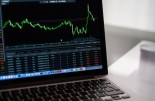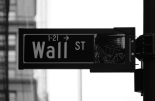Han Dieperink: Are American shares expensive, or just different?
Han Dieperink: Are American shares expensive, or just different?

This column was originally written in Dutch. This is an English translation.
By Han Dieperink, written in a personal capacity
The Shiller PE ratio is at levels last seen during the dotcom bubble. Panic selling on the stock market? Not necessarily.
Today's market is fundamentally different from that of the past, and those who blindly rely on historical benchmarks are missing the context. Let's take a look at the arguments for why higher valuations may not be as worrying as they seem.
A new economy calls for new perspectives
The composition of the stock market has shifted dramatically, and this has far-reaching consequences for how we should interpret valuations. Whereas twenty years ago, companies still had heavy factories, huge inventories and capital-intensive production lines on their balance sheets, today's market is dominated by platform companies that play a completely different game.
These companies have consciously opted for an asset-light strategy. Apple does not manufacture iPhones in its own factories, Nike does not make shoes with its own sewing machines. They outsource the capital-intensive hassle to low-wage countries and concentrate on what really adds value and generates high margins: product development, design, branding, marketing and building strong customer relationships.
The result? Structurally higher profit margins and spectacular returns on equity. Whereas traditional industrial companies were happy with margins of 5-10%, we regularly see margins of 20%, 30% or even 40% with this new generation. This is not a temporary phenomenon, but a fundamental shift in how successful companies operate. A higher valuation therefore does not reflect irrational exuberance or bubble formation, but simply superior and sustainable economic characteristics. The market is not pricing air, but quality.
Interest rates make the difference
This is where it gets interesting: even Robert Shiller himself, the creator of the famous CAPE ratio, acknowledges that his original measure has significant limitations. It is no coincidence that he developed a refined version: the Excess CAPE Yield. This measure compares equity valuations with bond yields.
The logic is actually very simple. Shares do not compete in a vacuum; they compete with bonds for investors' capital. In an era of structurally low interest rates, as we have seen for more than a decade now, higher share valuations are entirely logical and rational. Why? Because the alternative, fixed-income securities, has simply become dramatically less attractive.
When government bonds still yielded 5% or 6%, equities had to be competitively priced in order to compete. But now that those same bonds yield barely 2% or 3%, the hurdle for equities is much lower. Rationally speaking, investors are willing to pay more for future profits because they cannot find a decent return anywhere else. Without this interest rate context, the absolute level of the CAPE says very little.
Transparency and accounting shifts
The rules of capitalism have changed dramatically, and that too justifies different valuation levels. Stricter reporting standards and legislation such as the Sarbanes-Oxley Act following the Enron scandals have significantly reduced fraud risks and made companies more transparent. Investors now have much more reliable information about the true health of companies.
Less uncertainty means less risk. Less risk logically justifies a lower risk premium. And a lower risk premium translates directly into higher valuations that investors are willing to pay. This is not a bubble, but a rational adjustment to improved information and governance.
In addition, the behaviour of companies themselves has also shifted fundamentally. Whereas dividend payments used to be the dominant way of returning money to shareholders, we are now seeing massive share buybacks. These buybacks have a special effect: they mechanically improve earnings per share, simply because those same earnings are distributed over fewer shares.
This drives up the CAPE ratio optically, without there being any real overvaluation in economic terms. The underlying profitability of the company has not changed, only its presentation. Anyone who does not take this into account in their analysis is comparing today's apples with yesterday's pears.
The internet as a great equaliser
The internet has drastically changed the playing field. Information asymmetry has largely been eliminated. Knowledge about companies, sectors and markets is immediately available to everyone, often free of charge. What used to be the domain of professional analysts with Bloomberg terminals can now be looked up by any private investor from the comfort of their own home.
This democratisation of knowledge has made markets more efficient. Large valuation differences between comparable companies are noticed more quickly and arbitraged away. Surprises have become rarer. In such an environment, investors rationally pay more for shares. The playing field is more level, the chance of unpleasant surprises is smaller, and so the risk is lower.
The passive revolution
Another structural shift that is often overlooked is the explosive growth of passive investing. More than half of invested capital now flows into index ETFs and similar products.
These passive investors do not look at individual valuations or whether company X is too expensive or too cheap. They simply buy the entire index, with the weighting determined by market capitalisation. This creates a permanent, automatic demand for the largest companies, regardless of their current price-earnings ratio.
The classic link between valuation and demand has thus been fundamentally disrupted. In the old world, investors bought more of a share when it became cheaper and less when it became more expensive. Now, a growing army of passive investors buys mechanically, regardless of price. This explains higher average valuation levels without necessarily leading to bubbles or irrationality.
The timing problem
Then there is the fundamental problem with CAPE as a predictor: empirical research shows time and again that the correlation between a high CAPE today and price developments in the coming years is virtually zero. Yes, over the much longer term of ten years or more, a low valuation has some statistical predictive power for better returns. But over an investment horizon of one to five years? Virtually worthless.
Anyone who sells their shares now purely because the CAPE is high could miss out on juicy returns for years to come while the market continues to rise. History is full of stories about analysts who warned too early. Markets can remain irrational longer than you can remain liquid, as Keynes said. Or, in this case: markets can remain at high valuations longer than you have patience on the sidelines.
Context is king
The Shiller PE is not a worthless tool; it provides useful context and can offer some insight in the very long term. But it requires considerable nuance and an understanding of structural changes. The market of 2025 will be fundamentally different from that of 2000 or 1929.
Higher valuations partly reflect real improvements: superior business models with higher margins, greater transparency and more reliable information, more efficient market structures, structurally lower interest rates, and changed market dynamics due to the rise of passive investing. Those who only look at historical comparisons without taking this context into account will see ghosts that are not there.
Smart investors take a broader view and understand that the world has fundamentally changed. That does not mean that everything is rosy, or that crashes are impossible. But it does mean that a high CAPE in itself is no reason to panic.









